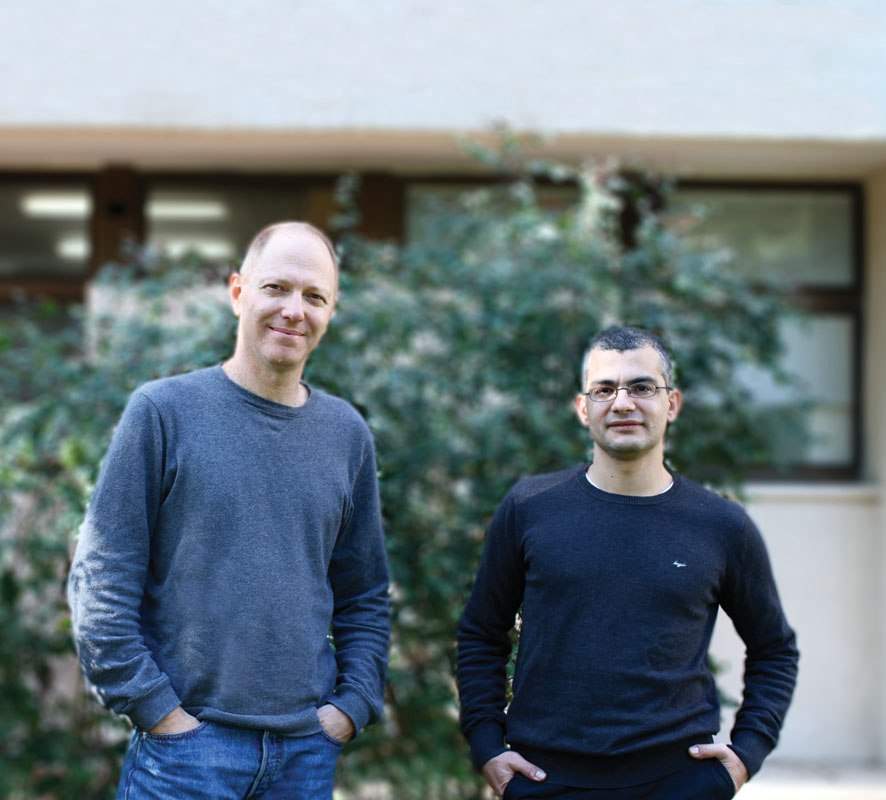
The search for effective cancer therapies is a lengthy journey fraught with ups and downs: great hopes alternate with disappointing downturns. Research at the Weizmann Institute of Science that is currently in its initial stages might pave the way to a new treatment approach using a miniature genetic device. “We have succeeded in presenting the idea in a test tube,” says
Prof. Roy Bar-Ziv of Weizmann’s Materials and Interfaces Department, who headed the research team. “Of course, the human body is so complex compared with isolated cells in a laboratory dish that prolonged studies will be required before this idea can be tested in human beings.”
To save the life of a cancer patient, the surgeon must remove the cancerous tumor without harming the surrounding tissue – often a challenging task. Cancer drugs, ideally, must also kill only the tumor cells while sparing the cells that are healthy. Yet, unfortunately, most conventional drugs, along with eliminating the cancer, destroy non-cancerous tissue, producing severe side effects. A new generation of therapies is being designed to kill cancer cells in a targeted, selective manner, reducing unwanted side effects to a minimum.
In a
study published recently in
Molecular Systems Biology, Weizmann Institute researchers synthesized a tiny genetic sensor that identifies cancer cells with great precision and destroys them effectively. The device, a three-gene DNA circuit called a “dual-promoter integrator,” or DPI, performs impressively well in a laboratory dish. Not only does it reliably identify and kill various cancerous cells, it can even assess the “degree” of malignancy, distinguishing between premalignant and full-blown cancerous cells.
Yeda Research & Development Company, the Weizmann Institute’s technology transfer arm, has patented the nano-device. Says Bar-Ziv: “We have a long road ahead of us before the genetic sensor can be tried in patients. Our ultimate future vision is for this synthetic sensor to serve as an independent ‘nano-surgeon’ that makes its own decisions, patrolling the body’s tissues, and entering and destroying cancerous cells on the spot.”
The DPI “nano-surgeon” identifies the cell as cancerous with the help of two DNA sequences in its circuit. These are two “promoters,” so called because they promote a gene’s activity, determining its timing and levels. For example, some promoters of growth are implicated in cancer: when such promoters are abnormally switched to the ON position more often or with a greater intensity than necessary, the cell turns cancerous. Accordingly, the DPI was designed to measure the activity levels of two such promoters and identify a cell as cancerous when both of them are overly active.
When the DPI is inserted into a cell, it responds to its surroundings, mimicking the behavior of the cell’s own genes. If the cell is cancerous and its own promoters are ON, the two promoters in the sensor also switch into an ON position. And once the cell has thus been identified as cancerous, the sensor sends a signal to its third gene – the “killer” gene, which releases a toxic substance eliminating the cell.
This relatively simple nano-device has major advantages over existing molecular approaches to the selective destruction of cancer cells. In most cancer gene therapies, malignant cells are identified by only one genetic feature, which often causes healthy cells to be mistakenly targeted for destruction. Using two genetic features makes it possible to identify cancer cells with much greater precision. Moreover, the new synthetic sensor can be “tuned” so that its “killer” gene responds only to signals above a certain level: If even one of the promoters exhibits only weak activity, the sensor will not respond. That in fact is what allowed the scientists to distinguish premalignant cells from cancerous ones: the growth signal in the latter was significantly stronger. Since the difference in growth signal levels between cancerous cells and healthy ones is even greater, this “tuning” can help the “nano-surgeon” to operate efficiently, zeroing in on the cancerous tumor without harming “innocently” growing healthy cells.
The research was performed in the laboratory of Prof. Roy Bar-Ziv by Dr. Lior Nissim for his Ph.D. dissertation. Nissim had previously earned a master’s degree in the molecular biology of cancer under the guidance of Weizmann Institute’s
Prof. Varda Rotter. Even though the current study focused on cancer, the three-gene sensor, which is built from replaceable modules, might in the future be adapted for the treatment of other diseases or for such screening tasks as the sorting of various stem cells.
Prof. Roy Bar Ziv's research is supported by the Phyllis and Joseph Gurwin Fund for Scientific Advancement; and the Carolito Stiftung.
